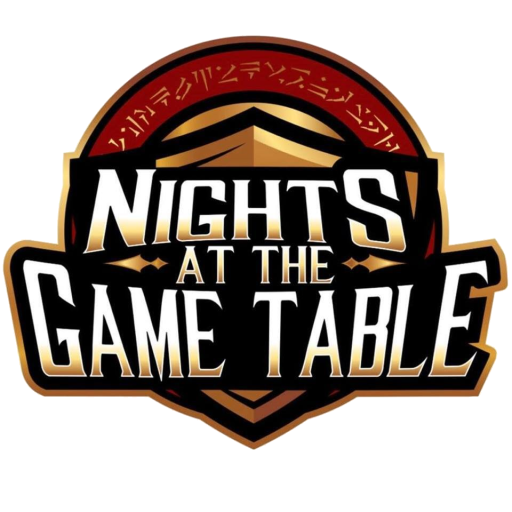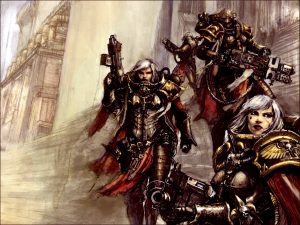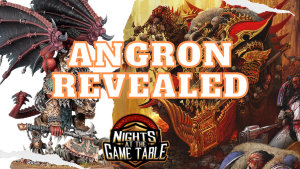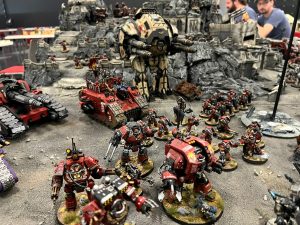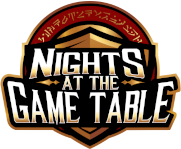40k is game with hundreds of different units, and literally infinite interactions, so needless to say sometimes you’re going to run into a unit or combination which your army cannot handle. But, that doesn’t mean you necessarily just lose to those types of units. Just because you can’t kill something certainly doesn’t mean you can’t win the game. All too often I see less experienced players focus on killing their way to victory, with the mentality of running through the metaphorical wall headfirst, instead of trying to sidestep the wall and then continue on forward.
The first step in ignoring units is understanding when it’s time to switch strategies to ignoring units and mitigating what they can do, as opposed to just killing them outright. Typically, I look for units which are more effort than they are worth to kill. This generally applies to the more difficult to kill units in the game, but not always. Here’s a quick list of units I that raise red flags for me across the table.
- Castellan (when surrounded by piles of chaff)
- Bullgryn (especially when buffed to craziness levels)
- Grotesques
- Talos
- Riptides (when supported with drones)
- Fliers in general
Of course that list isn’t exhaustive, but those units cover the 3 general archetypes of units which you can mitigate by ignoring them.

- Long range hard to shift firepower: Castellan surrounded by chaff and riptides with drone support
- Units that offer no value aside from their shooting: Fliers
- Slow moving combat death stars: Bullgryn, Grotesques, Talos
First let’s go over long range hard to shift fire power. This is probably the hardest to ignore/play around because of their far reach. In the examples given above, a Castellan typically shoots at 48″+ after a 10″ move, and a riptide shoots 36″ after a 12″ move. Those ranges are pretty horrifying. Additionally, almost nothing will stand up to them in an old fashioned shoot off. The Castellan going to 3++ invulnerable, and the riptide chucking heavy damage shots to nearby drones makes them nearly invulnerable to long range fire power. Coupled with the fact that due to their range they are often screened behind tons of Guardsmen or Fire Warriors respectively, it makes reaching either in combat nearly impossible.
So, how do you ignore such behemoths on the table? Well they are still subject to basic core rules like not being able to shoot in combat. That means if you can get your army locked in close combat with any of the metric tons of chaff standing in front of the Castellan/Ritpide, and you can take a hostage to prevent them from falling back you can avoid getting shot. From there, assuming your army is combat capable, you can start bouncing from combat to combat hugging random infantry unit after random infantry unit while the big bad shooty monsters are just sitting there solemnly and pouting about how they cant shoot their volcano cannon at Magnus for fear of killing a guardsmen.
Armies centered around 600+ points in a shooting unit that never gets to shoot, typically won’t have the ability to come back and win with the remaining 1400 points of their army. I personally have beaten Castellan armies using this exact tactic whilst not doing a single wound to the Knight all game.

But what about the other archetypes?
Units that offer no value aside from their shooting ie. fliers, are different to things like Knights and Riptides because of their mobility. Line of sight and range are typically factors which fliers don’t care about which makes avoiding them extra difficult. That said, it’s more than doable. Just like against Knights and riptides you can hug chaff to avoid being shot by fliers, and it’s even more detrimental to the flier player if you’re successful at this due to the fact that they have no ability to interact with anything aside from shooting them.
Fliers have other weaknesses you can exploit as well. Their mobility is as much a disadvantage as an advantage, and by that I mean fliers will typically outpace their chaff very quickly. You generally don’t see piles of Guardsmen screening Fire Raptors and Dark talons because the fliers will fly passed them in one turn. Generally speaking that means the fliers will be vulnerable to assaults from flying units, smites, and short range deep striking fire power like deep striking plasma, haywire, or guardian blobs. Oftentimes the flier players will be savvy and recognize this weakness and pair their fliers with a few cullexus to catch smites for, and screen from enemy deep strikers. This is actually yet another weakness you can exploit. Hugging a Cullexus is one of my favorite things ever to do. Due to his ability to only be hit on 6’s you are super unlikely to kill the Cullexus accidentally, which means you can hug him for multiple turns straight to avoid being shot.
At Adepticon this year I had 80 cultists hug 1 Cullexus and spread over 4 objecives while my opponents 3 fire raptors flew around in sadness with nothing to do.

Finally, that brings us to slow moving combat death stars such as Grotesques, Talos, and Bullgryn. These units are vastly different to the other two archetypes listed. They are assault units which really cannot be stopped. They plow through the middle of the table and just never stop coming. And of course, you can’t hug them because you’ll just die trying. So how does one handle this bowling ball coming for your army? Well, you avoid it. Typically, armies that run these kinds of units have limited fire support in the form of 3 ravagers or some artillery. If you can trade early and remove the fire support elements you can then start to run away and spread out from the slow bowling ball of death and engage the remaining aspects of the list. Once a unit like Bullgryn or Grotesques gets out of position it will take them approximately 2 weeks to get back into the game. Use their lack of shooting and speed to your advantage.
Not all armies can reliably hug their way through flier spam/knights and riptides, nor can all armies play keep away from Talos and Bullgryn, but when designing your lists you need to have a viable strategy for handling these kinds of units. If you’d like to learn other viable tactics for handling problematic units like these, or if you’re interested in just becoming better as a 40k player in general check out Nights at the Game Table PRO, which is my own personal 40k coaching package tailored specifically for you and your 40k goals!
Remember kids, if you can’t beat ’em, ignore em.
